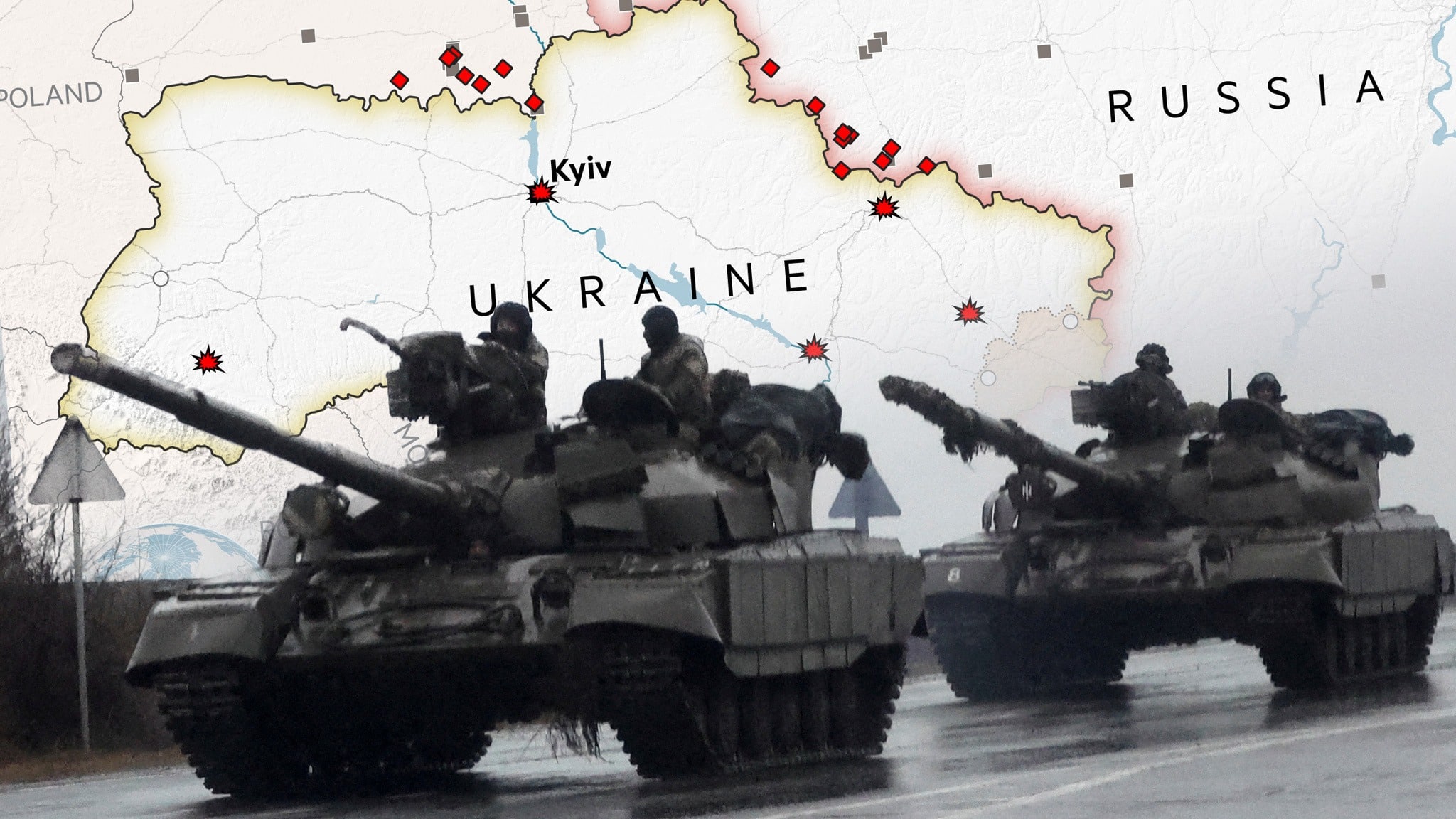
Tanks flock to the front lines outlined in the backdrop. Photo: Center for Land Warfare Studies.

Orinoco Tribune – News and opinion pieces about Venezuela and beyond
From Venezuela and made by Venezuelan Chavistas

Tanks flock to the front lines outlined in the backdrop. Photo: Center for Land Warfare Studies.
By Andrew Korybko — Nov 9, 2022
The following three interpretations provide the most likely explanation for the latest development: 1) Kiev is successfully pushing back Russian forces with full Western support; 2) Moscow is laying a clever military trap for its opponents; or 3) partially pulling back from Kherson is the secret prerequisite for a ceasefire.
The Russian Ministry of Defense’s announcement on Wednesday evening that its forces are pulling back beyond the Dnieper River in its newly reunified southern region of Kherson was met with shock among those across the world who are sympathetic to Moscow’s special operation in Ukraine. Even though the authorities had been evacuating civilians from the right bank over the past month and Army General Surovikin had previously told his people around that time to possibly expect militarily tough decisions in the future, few on this side of the New Cold War actually expected yet another Russian pullback.
This follows the surprise setback in Kharkov Region two months ago, which was much more chaotic and disorganized than the partial pullback from the Kherson Region, though the first-mentioned wasn’t a constituent part of the Russian Federation when that happened, unlike the second. The optics of the latest development are therefore extremely uncomfortable and can’t be sugarcoated, though to their credit, the Russian Ministry of Defense didn’t attempt to do that. Instead, Army General Surovikin and Defense Minister Shoigu candidly informed the Russian people about why this was happening.
According to them, retaining that territory makes little military sense, especially since the Damocles’ sword of Kiev attacking the nearby Kakhovka Dam is hanging over everyone’s heads and could ultimately isolate those of its forces remaining on the right bank in that scenario. With this in mind, the decision was made to start the pullback of their forces from there. Most painful of all, however, is that the region’s eponymous capital will also be evacuated as part of this process. For that reason, Kiev, its Western patrons, and their supporters are wildly celebrating what just happened.
The following three interpretations provide the most likely explanation for the latest development:
1. Kiev Is Successfully Pushing Back Russian Forces With Full Western Support
This conventional interpretation of events posits that US-led NATO’s proxy war on Russia through Ukraine that provoked Moscow’s special operation there in the first place has evolved to the point of successfully pushing back its opponent’s forces from the same territory that they now claim as its own.
2. Moscow Is Laying A Clever Military Trap For Its Opponents
The second more speculative interpretation is to suspect that things aren’t as they seem and that Moscow is laying a clever trap for its opponents to tempt them into overstretching their supply lines, more easily exposing themselves to strikes, and fighting a Stalingrad-esque pivotal battle in Kherson city.
3. Partially Pulling Back From Kherson Is The Secret Prerequisite For A Ceasefire
The last interpretation is purely speculative and relies on the sequence of signals that the US sent prior to this week (detailed here) and Foreign Ministry spokeswoman Zakharova’s reaffirmation of Russia’s interests in talks on Wednesday to suggest that this pullback is the secret prerequisite for a ceasefire.
Regarding the first interpretation, it’ll be considered credible if the following happens:
1A) Kiev’s Western-backed forces successfully occupy the entire right bank that Russia withdrew from;
1B) They then successfully cross the Dnieper River in Kherson Region;
1C) And this leads to them either chipping away at or quickly crushing Russia’s “Crimean Corridor”.
The second interpretation requires the following to happen in order to be deemed credible:
2A) Kiev’s Western-backed forces struggle to occupy the entire right bank of the Kherson Region;
2B) They similarly struggle to occupy Kherson city;
2C) And their efforts end with the right bank of Kherson Region becoming a (demilitarized?) buffer zone.
Finally, the following must soon happen in order for the third theory to not be dismissed as coping:
3A) The right bank of Kherson Region either remains demilitarized or is only lightly militarized by Kiev;
3B) Fighting between Kiev’s Western-backed forces and Russia’s in Kherson Region slows down or stops;
3C) a diplomatic breakthrough is achieved ahead of, during, or immediately after next week’s G20.
To wrap it all up, here are the three main takeaways from what just happened:
1. Russia pulled back from territory that it claims as its own to the disappointment of its supporters;
2. It’s more likely that Kiev will keep advancing or get bogged in a quagmire than agree to a ceasefire;
3. And there’s a chance that Kiev and/or Russia might asymmetrically react to the latest development.
(korybko)